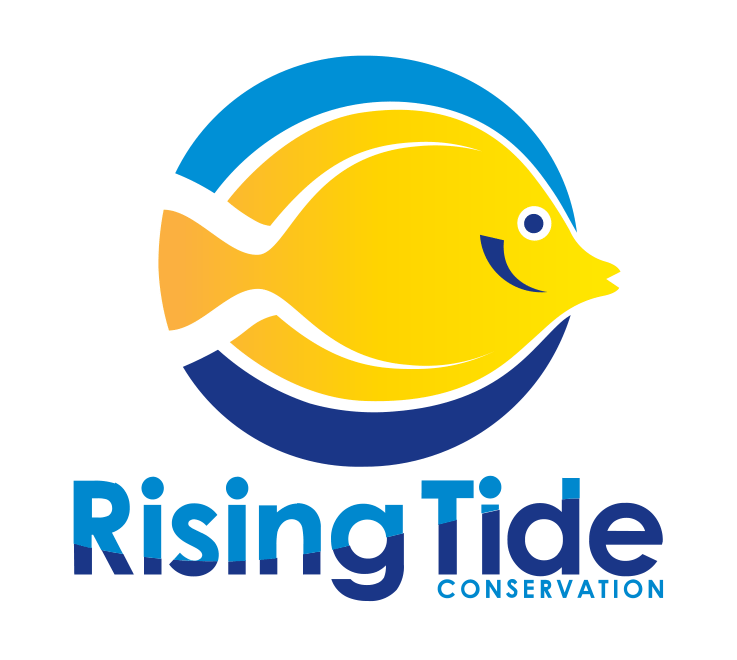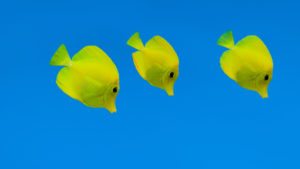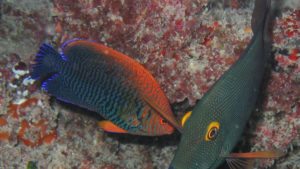Yellow Tang larvae reared at OI.
A=14 dph, B=24 dph, C=36 dph, D=45 dph, E=50 dph, F=60 dph. Scale bar = 1mm
It’s been about a year since we reported our best success to date with rearing yellow tang, having gotten larvae through to day 83. Since then we’ve had some repeated successes getting the larvae past the first month or so, but never any quite as far along as that cohort from last January. Frustratingly, we seem to have taken a few steps backward again (as seems more common in this field than not), and are now struggling to keep the larvae going past the first week. We have been revisiting the protocols used from that successful period to ask a lot of questions pertaining to why that worked then, and not now.

Hawaii Pacific University Graduate Students (left to right) Aurora Burgess, Emma Forbes & Erin Pereira-Davison
I have a great group of ambitious graduate students working on some key aspects of this challenge. Emma Forbes is focusing her research on the microbial community associated with the live feeds and rearing environment, which may have huge effects on larval survival. Erin Pereira-Davison is investigating several key environmental parameters that could affect first feeding success. She’s looking at the effects of photoperiod, light intensity, turbidity and prey density on first feeding in the larvae. Aurora Burgess will be focusing on the development of the feeding mechanisms in the early larvae, and how these development impacts prey selectivity and feeding ability. She will also be looking at alternative prey items from the wild, compared to our cultured copepods, and testing their use in the culture process. On top of all this, we have also recruited new broodstock from partner institutions in Hawaii and have recently obtained good spawns from these new stocks. This will help us determine if perhaps our recent challenges are egg quality-related.
All of these projects working together will hopefully reveal some important insights into the culture processes that will help us better understand the unique requirements of these larvae. Stay tuned for updates from our work, and hopefully some more success to report soon!
~Aloha,
The Rising Tide crew at the Oceanic Institute



